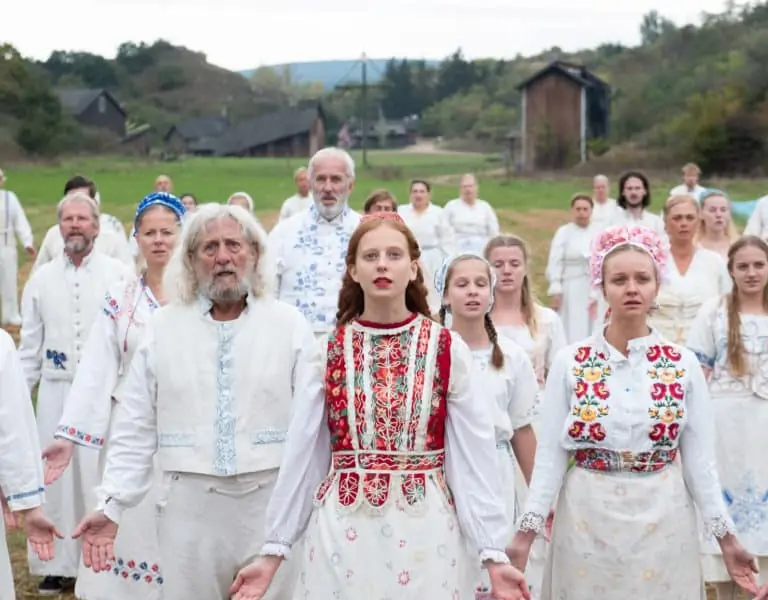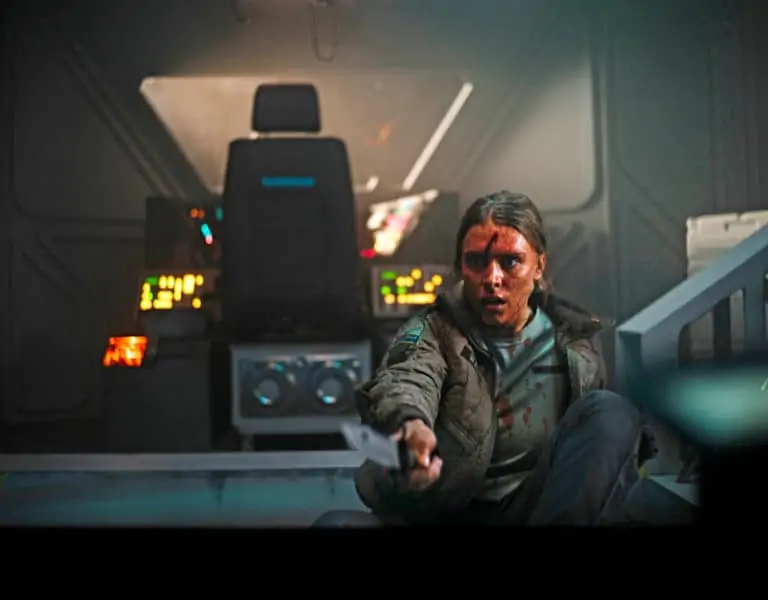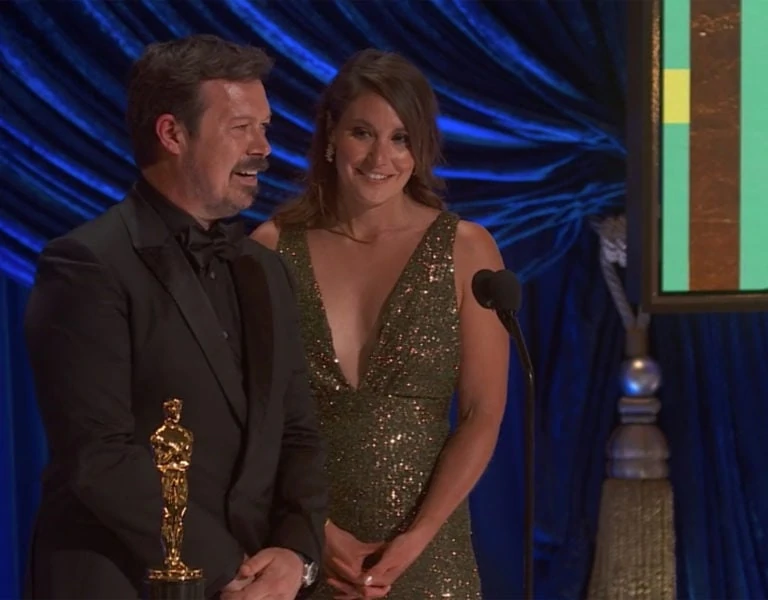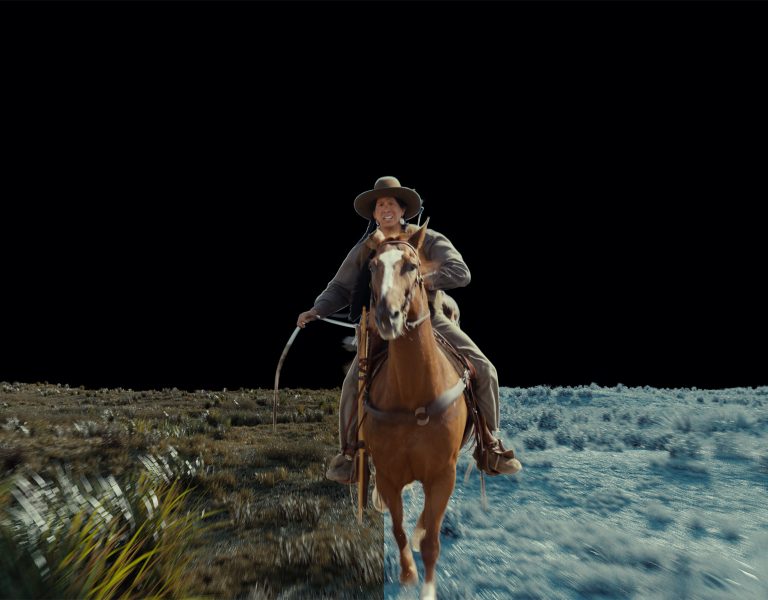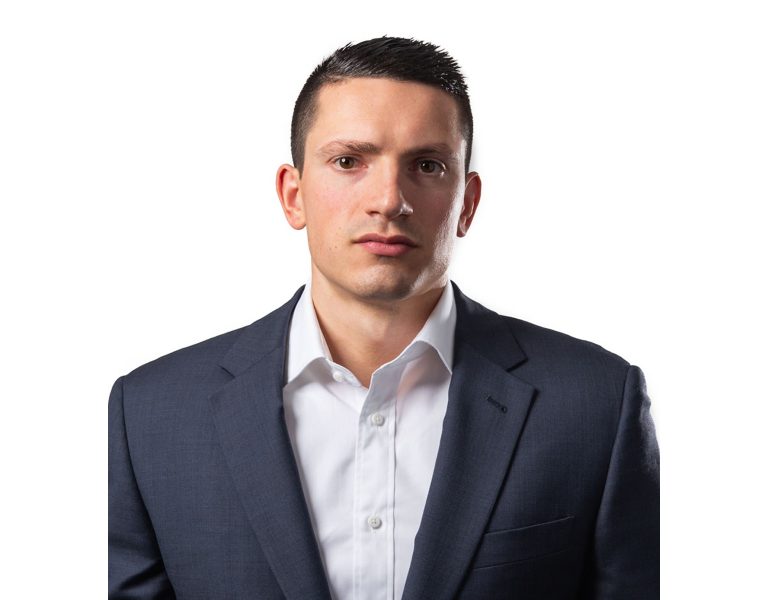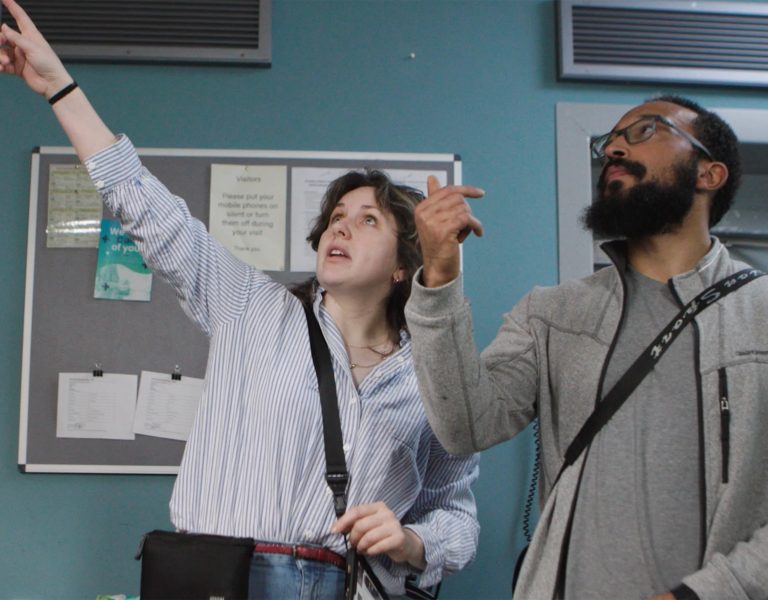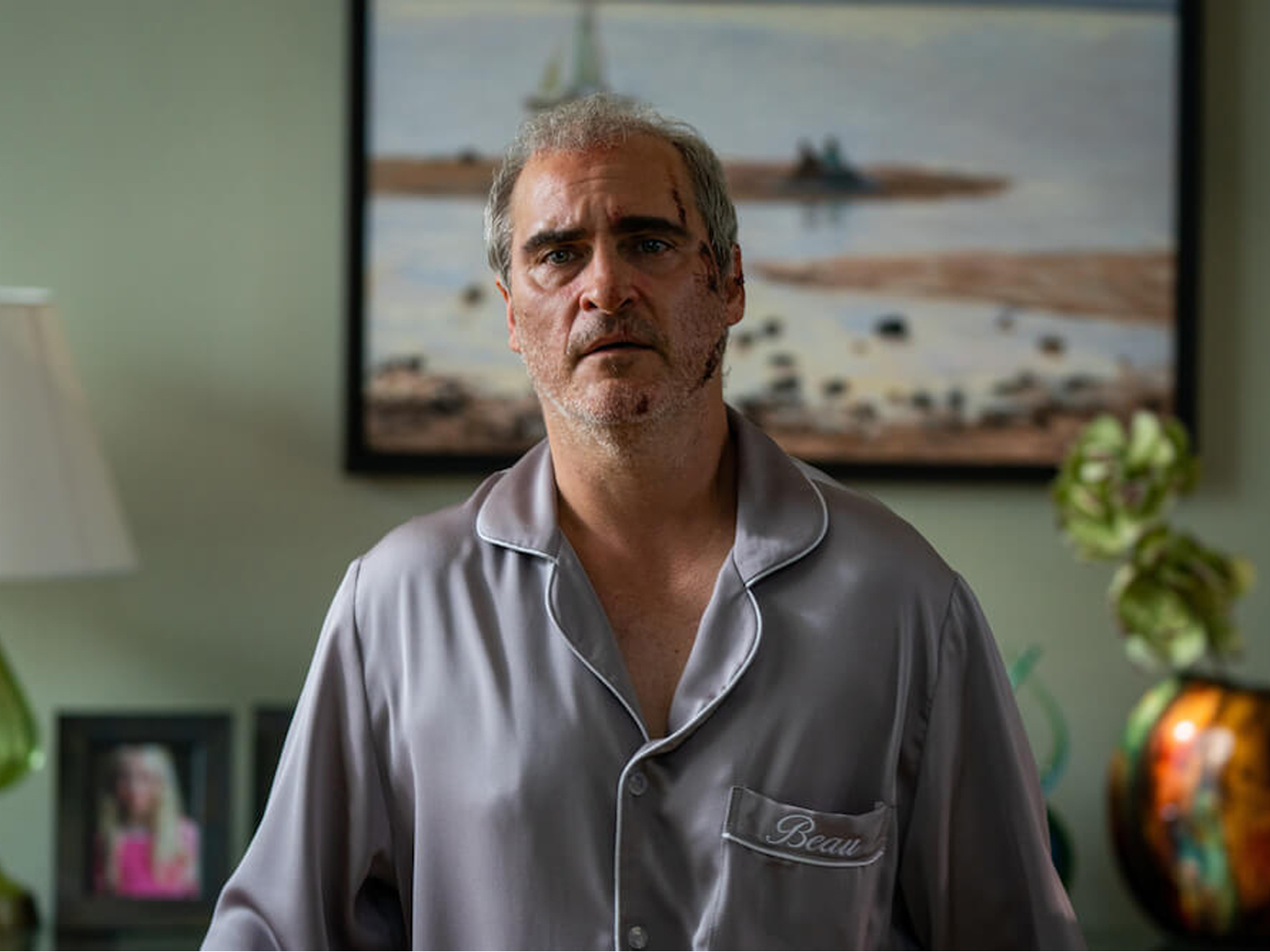
Cinematographer Pawel Pogorzelski and writer-director Ari Aster began their long-running collaboration when they were both students at the American Film Institute.
After making a string of shorts together, they teamed on the lauded horror features Hereditary and Midsommar, which in turn paved the way for their latest collaboration, the feature Beau Is Afraid. The movie, Pogorzelski says, is “a beautiful, epic story. It’s Homer’s Odyssey in the 21st century.”
Beau Is Afraid follows the eponymous Beau Wassermann (Joaquin Phoenix) as he sets off to visit his mother — a journey that immediately veers off course, sending him down a twisted, darkly comedic detour through the horrors of the modern world. Pogorzelski and Aster began discussing the project well in advance of principal photography, and they enlisted the camera team some six months before production commenced. Additionally, as they had done on their previous feature collaborations, they again worked with Brian Mills, a member of the Special Optics team at Panavision Woodland Hills, to assemble an optics package that would match Aster’s singular vision for the story.
In the lead-up to the movie’s release, Pogorzelski, Mills, and 1st AC Dany Racine reflected on the creative partnerships that helped guide Beau Is Afraid from its director’s imagination to the big screen.

Cinematographer Pawel Pogorzelski.
Panavision: Pawel, when you and Ari first talk about a project, does the look start to take form right away?
Pawel Pogorzelski: Ari is very prepared and has a very clear vision. We’ll watch a couple movies and send references. He very much knows what he wants, and I have to deliver. What makes me happy is when I show him a test during prep and he says, ‘This is what I wanted but even more.’ Then, I’m able to push that in the direction.
Dany, how did you become involved in this project?
Dany Racine: This was my first collaboration with Pawel. I heard that Ari was coming to Montreal for his next movie, and I had seen his work with Pawel, so I got in touch with Pawel right away and I made sure I stayed available. I really wanted to do this project.

When you and Pawel first spoke, how did he describe the project?
Racine: Well, he has this very close relationship with Ari, so he spoke about the last projects they made together, and he said that Ari likes to work very closely with the camera department. Really soon after that, he brought Ari into a meeting so we could all chat together about the project — myself, the camera operator, Ari and Pawel. We talked about everything: the needs, the challenges, the budget, the actors. That was about six months before we started shooting, so everybody was included very early in the process.
It was very important to Pawel that Ari knew the core of the camera department and would be well surrounded. He needed to make sure that Ari felt comfortable about how we were going to work and be involved in the project. And that was very exciting. There was the camera operator, Geoffroy St-Hilaires, and the second AC, Soupharak Keoborakoth. The three of us were pretty much always in the room with Ari and Joaquin, just living that moment, tight around the camera.
 Joaquin Phoenix and director Ari Aster.
Joaquin Phoenix and director Ari Aster.
Pawel, when it’s time to start choosing your lenses, how do you kick things off with Brian?
Pogorzelski: I send the references from Ari over to Brian, and he’ll tell me, ‘It’s probably going to be these lenses,’ but I’ll still go and test everything. We’ll watch the tests on the big screen here at Panavision, with the director, and then choose which we like best. From there, I say to Brian, ‘Okay, now we have a foundation. How do we push that?’
Brian Mills: From the initial conversation when Pawel’s sending me references, I’ll dig into the vast inventory of our lenses to find that starting point of what might fit the bill. What camera is he planning to shoot on, what era were the lenses built in, what’s the close focus, what intrinsic qualities are contained in the lenses? The obvious question to start with is spherical or anamorphic, and from there, we’ll narrow it down to a couple series, and Pawel will test to see what jumps out at him.
During that process, we’ll also talk about the story. In the case of Beau Is Afraid, there was a lot of talk about how Beau is an insulated character, and that pointed us in the direction we wanted to go. After the initial test, that’s when we’ll discuss the possibilities within the lenses that he’s chosen to see how we might be able to tailor them to the picture.

For Beau Is Afraid, what drew you toward the Panaspeeds?
Mills: Part of it was format. Pawel was planning to shoot Alexa LF, so we were looking at lenses that would cover large format. Also the speed of the lenses, close focus, usability, and our ability to customize within that series. We’ve done this process a few times now, and I think it tends to scream at Pawel when he sees the right one. He’s never tentative about it. When he sees it, he says, ‘That’s it, right there.’ Then we’ll start tailoring the lenses to Pawel’s liking, and over the course of a few days we’ll narrow down exactly the feeling he’s trying to evoke from the lenses.
Pogorzelski: Ari’s very involved with this. His first experience with this was on Hereditary, and now, this is just how we make movies. He’s so visual, and he has a really great sense of taste and knows how his movie will look in the end. I can ask him, ‘What do you think of this direction?’ And he’ll be like, ‘I think it could be a bit softer,’ or ‘Can we get the colors to pop more?’ It’s a collaboration, and Brian’s taste also goes into the lenses. He knows he has to push it.
Mills: For Pawel, more is always better than less. We’ll go extreme and then pull it back from there.
Pogorzelski: I like finding the limit and then bringing it back to the moment where you don’t feel it. I want to test flares, what happens when we’re shooting in the dark, in the light, with bright highlights in the dark — I test all these scenarios to see the effects. Is it falling apart somewhere? When it flares, does it bloom too much? Maybe that’s super interesting for one movie but not for another.

Having worked on multiple movies together, have you developed a common language when you’re talking about these optical characteristics?
Mills: Yeah, as we’ve gotten to know each other over the years, I feel like I have a stronger instinct for what Pawel might be going for. At this point, I understand his artistic vision and can help out in that respect a little easier.
On Hereditary, he used Primos, and on Midsommar, it was Primo 70s. From that standpoint, Pawel typically wants to see what we might have developed since the last picture. But we start from the references he shares. Some of our more vintage lenses are good for some projects but not for others. For Beau Is Afraid, he wanted very saturated colors, so the color reproduction of the lenses was very important, which led us to modern lenses.
Pogorzelski: But there was a beautiful softness to them. I know Dany has done many, many movies in Canada and the U.S., and when he saw them, he said, ‘These are the most beautiful lenses I’ve ever worked with.’
Racine: You could see that they had character that you can find nowhere else.
Pogorzelski: What was also cool was that it was like we had many lenses in one. At T1.4, you have certain characteristics — not only does the large format make for a very shallow depth of field, but they also started blooming and falling apart on the sides. And as you closed down to 2.8, they still had a softness, but the falloff wasn’t as aggressive. And if you went to 5.6, they were different again. It’s the same lens, but something feels a little bit different, with just a little twist to it. It was really cool. We definitely used that in the storytelling.
Racine: The stop tells everything. We would be talking about a shot, and I would say to Pawel, ‘Let’s drop the stop so we can be wide open and focus on the eyes.’ We challenged ourselves, and when we decided there would be shallow depth of field, it was for a reason. It wasn’t because we couldn’t light it.
Pogorzelski: Dany had an amazing grasp of these lenses — he knew them almost better than me. He would be like, ‘I think this is a good moment to go 1.4, what do you think?’ He wasn’t afraid of anything, and he really felt the emotional impact the lenses could provide to support the action that was happening.
Racine: Well, the thing is that Ari and Pawel, when they build their shots, it’s not about quantity. It’s the quality of the shot that’s important. It’s about what you want the shot to tell. Every shot has its own story. That’s why we could discuss the idea of going shallow, even if it was harder for me, because there was a purpose to it. It was not just for style; it was about the story that we were building.
Pawel knows how to light. He can light the entire movie at 4 or 2.8. But the idea was, ‘What’s the best stop for the scene?’ It’s a very emotional movie. Every shot is so intense. Joaquin is amazing, and his performance is so touching. All of this together was what we could speak about and build.

Were there particular focal lengths that proved to be your workhorses?
Pogorzelski: Ari loves wide lenses.
Mills: 17mm, 24mm, 35mm.
Pogorzelski: And 40mm, and the 50mm was our ‘long’ lens. We also had a zoom that we used, the Primo 11:1. There was a scene where we started at the wide end and then zoomed into Joaquin for a very long time, like three minutes, and Dany had to keep it sharp on his eyes.
Racine: I think it was a combination of a push-in and a zoom, and we covered the entire range of the zoom. It was very intense and very slow. It’s very emotional; Joaquin is giving so much of himself, so you want to get it early in the process. You don’t want to make him repeat it 10 times. Everything was hard — the dolly, the zoom, the focus. So we practiced and practiced and spent a lot of time on that shot. That was quite a challenging afternoon.
Pogorzelski: Dany was so cool. He’s like a ninja!
Racine: I’ve always tried to make choices to work with directors and DPs I want to work with, and Beau Is Afraid is the most important movie in my career — the most intimate, important movie. This one is way out there. My relationship with Ari and my relationship with Pawel, it’s another level of moviemaking.
Pawel is one of the best directors of photography I’ve worked with. He’s so talented and committed. When he wants something, unless you can prove it’s not possible, you have to make it happen. So it’s challenging, but it makes the movie better. He’s pushing the limits and stretching, and he made sure that what we were going for ended up on the screen. Everything’s up there. I’m very proud of that.

Pawel, what drew you toward a career in cinematography?
Pogorzelski: It was my dad who encouraged me towards it. I was studying sciences when I was 17 and 18 because all of my surrounding friends and family were doing health sciences, but it was like a different language — I couldn’t understand it. All of the rules that were just a given, I wanted to understand why. I had a really hard time, and my dad, who was a dentist but had wanted to be a cinematographer, he suggested I try photography. I tried it, and I fell in love with it right away. With photography, the set of ‘rules’ is there to be understood and broken, which works better with my brain than chemistry or biology. There’s not a right way to do something, but you know why you do what you do, why you choose a certain lens. There’s a reason, or at least a gut feeling.
I also have to thank my parents for constantly putting images in my head with the great books they read to us when we were growing up. When people ask me what cinematography is like, that’s what I’m reminded of. The script is the book, and I’m still a 5-year-old kid in bed, imagining the images in my head. Now I get to put them on screen and share them with everyone. That’s what I do.

–
Beau Is Afraid images courtesy of A24. Unit photography by Takashi Seida. Photo of Pawel Pogorzelski by Mike Carter.
This article was shared with permission from Panavision.
